Cannondale road bikes explained: A complete overview
All the key information you need to know about the the fast end of Cannondale's range: Road, time-trial, gravel, and cyclo-cross
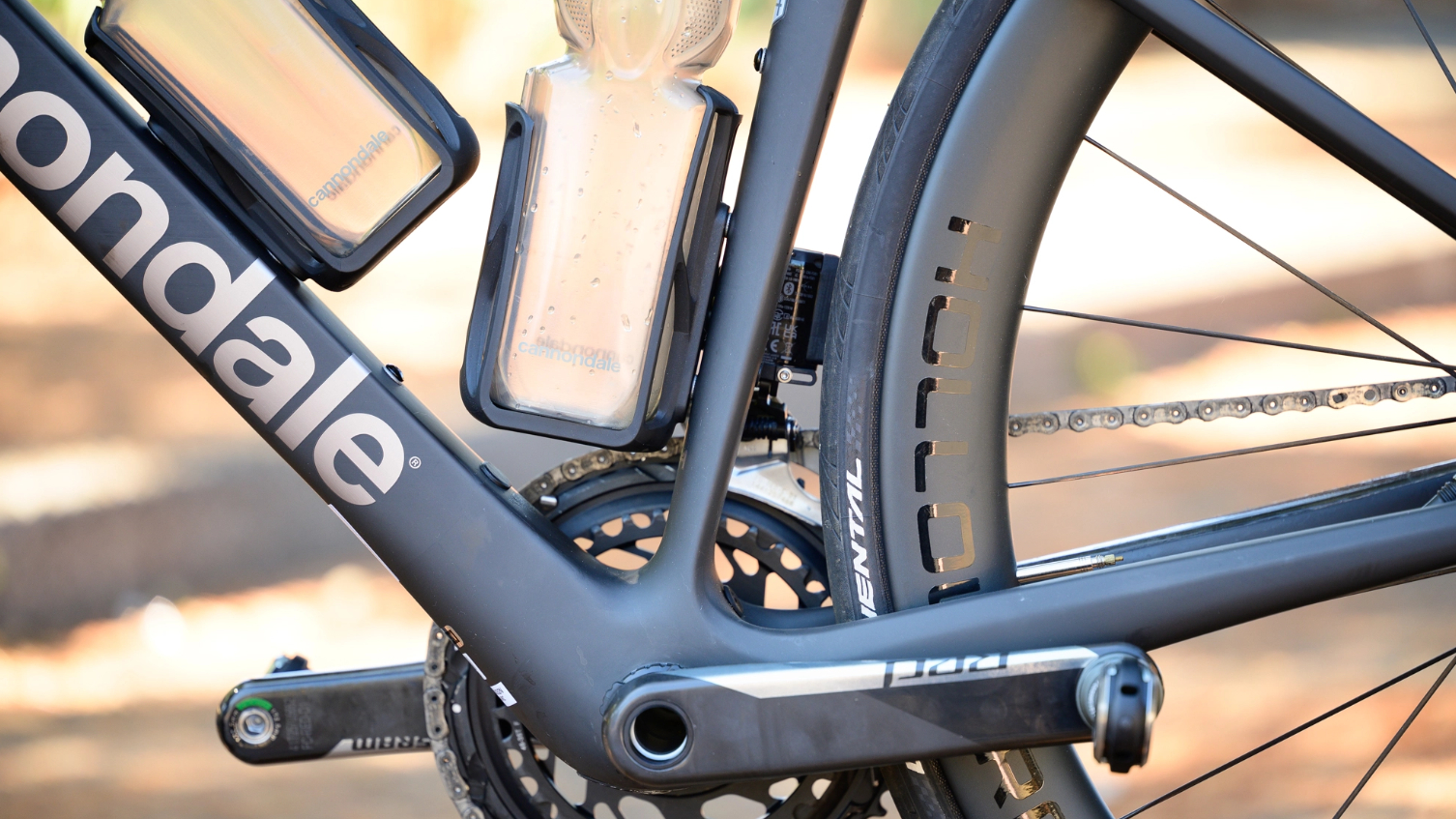
Cannondale has been making bikes since 1971 and produces a wide array of different road, gravel, and e-bikes with time trial and cyclocross options to go along with that.
The brand has innovated with technologies such as the single-leg 'lefty' suspension fork, and BB30 bottom bracket. Not to mention the SuperSix EVO road bike with its sharp handling and race geometry. Cannondale bikes feature in our best road bikes, best endurance bikes and best gravel bikes guides.
On the road, the EF Education–EasyPost and EF-Oatly-Cannondale men’s and women’s WorldTour teams have been racing on the brand's bikes for the last decade. GrandTour stages have been won across all three Grand Tours on their latest road offerings.
In this guide, we’re going to cover the entire Cannondale road and drop-bar range of bikes. There are a range of different specifications, groupsets, and frame materials to suit almost anyone’s needs or budget.
Quick guide to Cannondale's road and gravel bike range
Here is a quick summary of each model
Supersix EVO
The Supersix EVO is Cannondale’s all-around race bike, having evolved from a lightweight climber to a blend of lightweight and aerodynamics. Integrated handlebars and proprietary aero bottles aid in the watt saving.
Systemsix EVO
The super aero-focused model from Cannondale has since been superseded by the latest Supersix EVO as the brand's top machine. But remains available for those looking for an aero road race machine.
CAAD13
Cannondale’s aluminium road racing machine uses aerodynamically profiled tubing and dropped rear stays to aid comfort. It offers a stiff and good value race platform.
CAAD Optimo
Champagne experience for lemonade money is the tagline for this bike. Cannondale’s cheapest road offering borrows tech from higher-end models and blends it into a functional alloy road bike.
Synapse
The Synapse is Cannondale’s all-road bike featuring an alloy frame, mudguard mounts, and comfort features such as dropped seat stays. Not a gravel bike, with clearances being too small but capable on rougher surfaces.
Synapse Carbon
The carbon-framed version of the Synapse still focuses on road endurance performance as well as all-road capabilities. Comfort, handling, and going long are what Cannondale claim this bike is designed for.
Superslice
The brand’s time trial offering, however it seems impossible to purchase and is not available to buy anywhere. Used by the EF Education teams in WorldTour time trials, it features a lot of technology and frame profiles from the Systemsix.
Topstone Carbon
Utilising Cannondale’s Kingpin suspension system, the Topstone Carbon is a gravel bike designed to bridge the gap between gravel bike and mountain bike, with higher-end options coming with lefty-suspension forks.
Topstone Alloy
The alloy version of the Topstone loses the Kingpin suspension but remains a capable gravel bike with high tyre clearance and plenty of mounting points. A carbon fork and dropped seat stays aid comfort, while value is a strong point.
Supersix EVO SE
For gravel racing at high speed where weight and speed start to outweigh comfort. Larger tyre clearance still provides some comfort, but aero tubing, high stiffness and light weight are the key focus points here.
Supersix EVO CX
Identical to the Supersix EVO SE in terms of geometry, with aero tubing and clearance for wider tyres, but equipped with a SRAM lightweight 11-speed mechanical Force group set for fast-paced CX races.
Synapse Neo Allroad
The brand’s lightweight carbon fibre framed offering for electric road bikes. Featuring 40mm tyre clearance for all-road performance and a powerful Bosch motor, this is an e-bike designed for any terrain.
Topstone Neo
Using the Mahle rear hub motor paired with an aluminium frame with high tyre clearance, the Topstone Neo is designed to be a cheaper entry point into the e-road bike market for Cannondale without compromising performance.
Cannondale road bikes
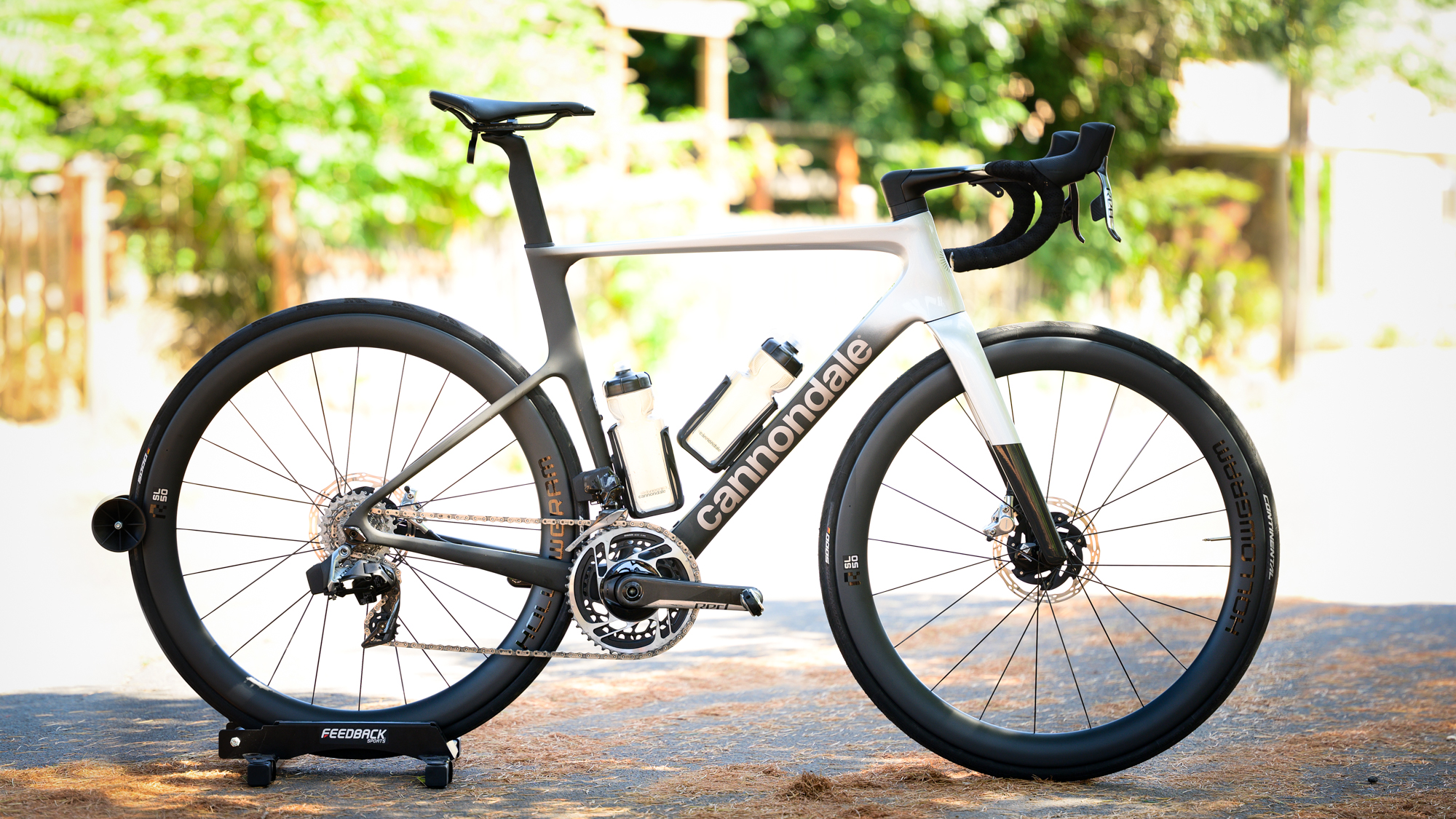
Specifications
Reasons to buy
Reasons to avoid
The latest SuperSix EVO was released in 2023. The 4th gen SuperSix follows the pursuit of lightweight like previous models whilst also focusing on aero performance with a narrower headtube and delta steerer for internal cable routing. Cannondale also added a narrow seatpost and extended tube profiles where suitable. New aero bottle cages and bottles aid aero performance further but can be a bit of a faff to get used to. The sharp race handling has been maintained, while tyre clearance is around 30mm, putting it a bit behind some modern aero bikes.
In addition to the previous range-topping SuperSix Evo Hi-Mod model, there is now the Lab71 variant for a small weight saving and an additional £2000 spend. Fortunately, even though the range-topping option will set you back £12500, more budget-friendly mechanical 105 options start at £3000. Although top-spec models don’t come with a power meter.
Cannondale SuperSix Evo 4 First Ride review
Model Range
You can trust Cyclingnews
- SupeSsix EVO Lab71 Team (Shimano Dura Ace Di2)
- SuperSix EVO Lab71 (SRAM Red AXS Etap)
- SuperSix EVO Lab71 (Shimano Dura Ace Di2)
- SuperSix EVO Hi-MOD 1 (SRAM Red AXS Etap)
- SuperSix EVO Hi-MOD 2 (Shimano Ultegra Di2)
- SuperSix EVO 1 (SRAM Force AXS Etap)
- SuperSix EVO 2 (Shimano Ultegra Di2)
- SuperSix EVO 3 (Shimano 105 Di2)
- SuperSix EVO 4 (Shimano 105 Mechanical)
- SuperSix EVO Lab71 Frameset
- SuperSix EVO Hi-MOD Frameset
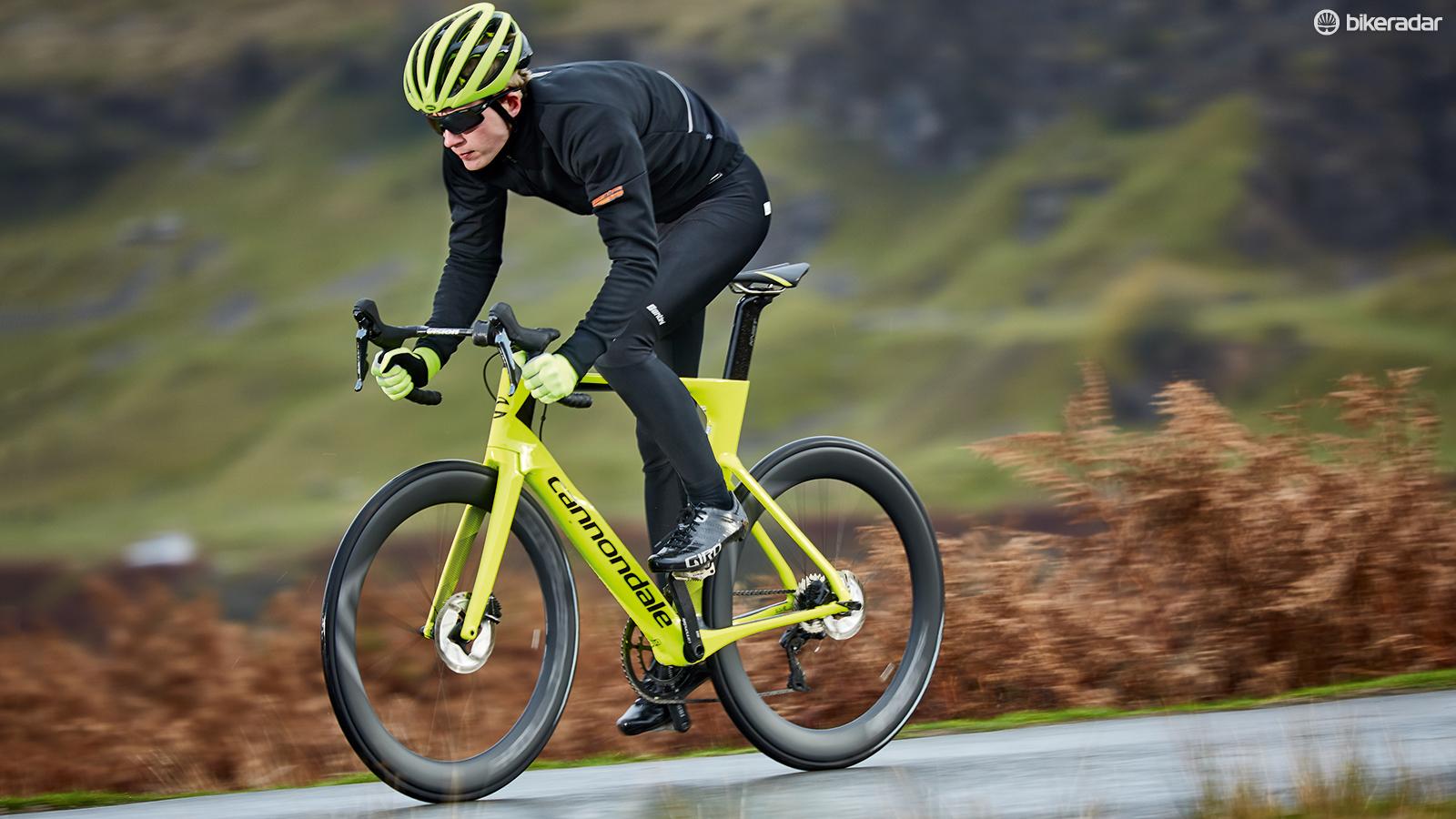
Specifications
Reasons to buy
Reasons to avoid
The System Six almost feels like Cannondale's forgotten road model at times. It is still available though and is featured in our best aero bikes guide.
Deep tube profiles, integrated bar and stem options and internal cable routing are all designed to make this frame as fast as possible while being stiff and light enough for all-terrain performance.
This bike has often been the choice of aero-focussed Irish racer Ben Healy rather than the SuperSix EVO 4, but does seem to be nearing the end of its production lifespan, generally, it is seen far less than the SuperSix.
Cannondale SystemSix in-depth review
Model range
- Systemsix Hi-MOD (Shimano Dura Ace Di2)
- Systemsix Hi-MOD (SRAM Red AXS Etap)
- Systemsix Hi-MOD (Shimano Ultegra Di2)
- Systemsix (Shimano Ultegra Mechanical)
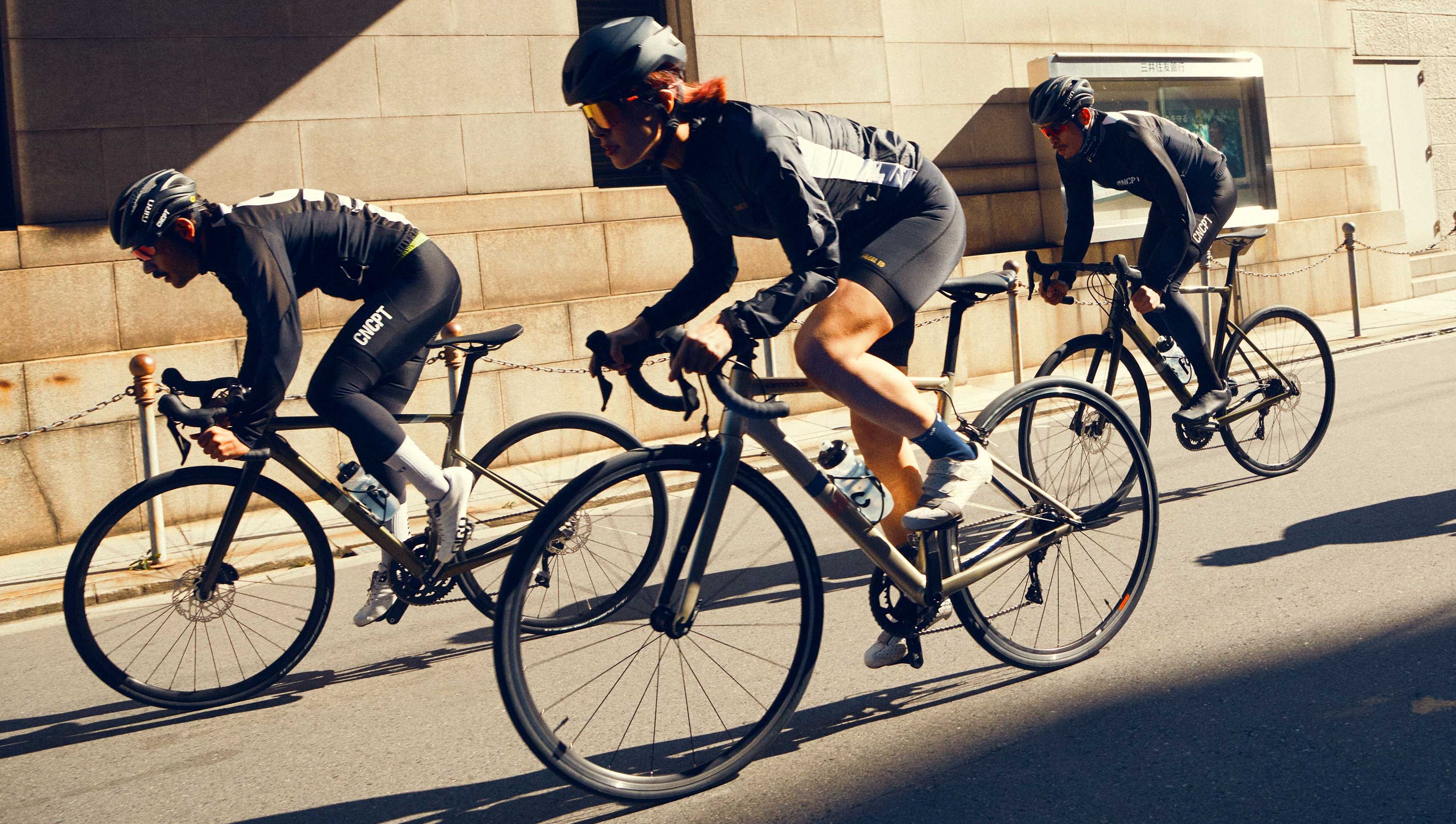
CAAD13
Specifications
Reasons to buy
Reasons to avoid
The CAAD13 has evolved over the years and become a trickle-down frame for much of the features and technology used in Cannondale’s top-of-the-range offerings.
Featuring a quality alloy frame, but now with the dropped seat stays and aero tube profiles found on the SuperSix EVO range, the CAAD13 represents a good level of race bike performance for significantly lower prices.
The geometry and handling have been designed to be sharp and ideal for a nimble race bike while carbon forks provide some vibration dampening. You can also fit mudguards, making it a popular winter bike.
Interestingly though, the Shimano 105 Di2 model comes in at £3250, just £750 below the carbon frames SuperSix EVO 105 Di2 equipped model.
Model range
- CAAD13 (SRAM Rival AXS Etap)
- CAAD13 (Shimano 105 Di2)
- CAAD13 (Shimano 105 Mechanical)
- CAAD13 Women (Shimano 105 Mechanical)
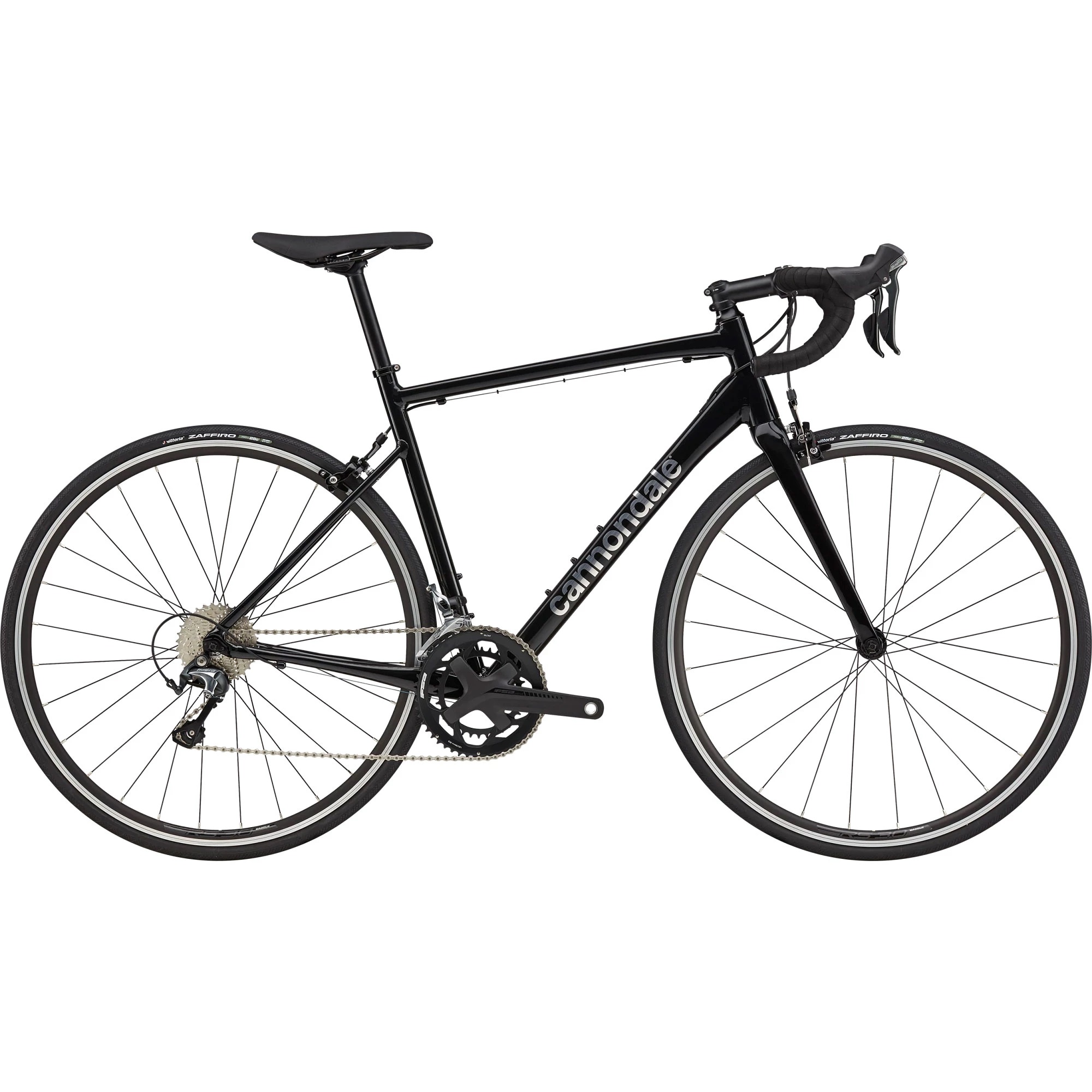
CAAD Optimo
Specifications
Reasons to buy
Reasons to avoid
Cannondale has a budget road bike offering named the CAAD Optimo, featuring an alloy frame, carbon forks, mechanical groupsets and rim brakes.
A broad size range and external cabling make for a bike that is low-budget and should be easier to maintain without as much need for mechanic assistance.
However, rim brakes are becoming somewhat obsolete in the bike market nowadays with some disc brake offerings still undercutting the CAAD Optimo prices. Although Cannondale aluminium frames are renowned for being good quality.
Model range
- CAAD Optimo 1 (Shimano 105 2x11)
- CAAD Optimo 2 (Shimano Tiagra 2x10)
- CAAD Optimo 4 (Shimano Claris 2x8)
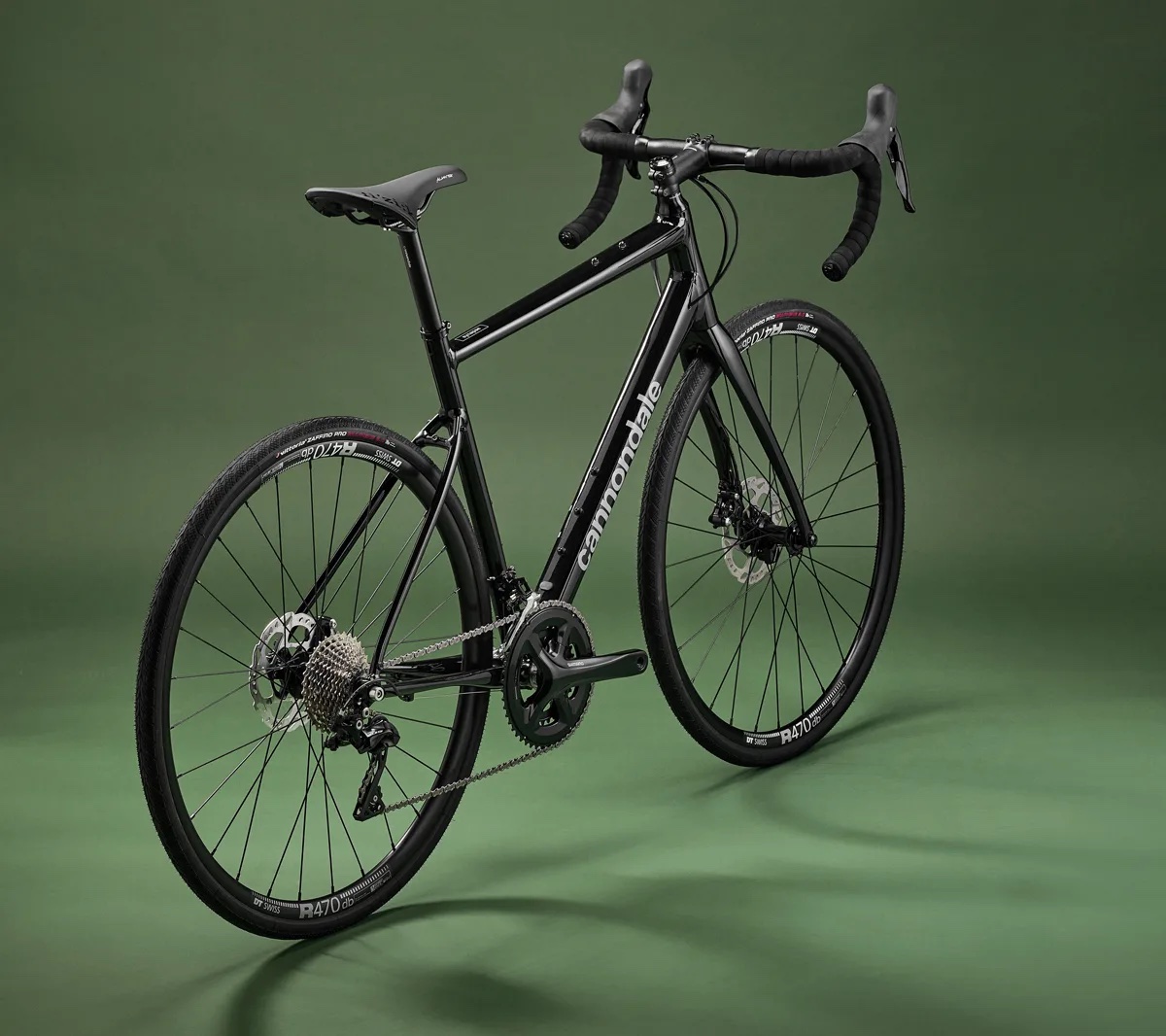
Synapse
Specifications
Reasons to buy
Reasons to avoid
The aluminium Synapse is an impressively versatile bike with mudguard mounting points, 32mm tyre clearance, and special endcaps to make it compatible with wheel-on turbo trainers. A well-thought-out feature to make this low-budget bike work with less expensive training accessories.
The spec options are slightly limited with older mechanical Shimano options the only groupsets available, and overall weight is heavier. However, for a disc brake bike that comes in a huge range of sizes to fit any rider, this is a good value bike that is suitable for a lot of different riders and riding types.
Model range
- Cannondale Synapse 1 (Shimano 105 2x11)
- Cannondale Synapse 2 (Shimano Tiagra 2x10)
- Cannondale Synapse 3 (Shimano Sora 2x9)
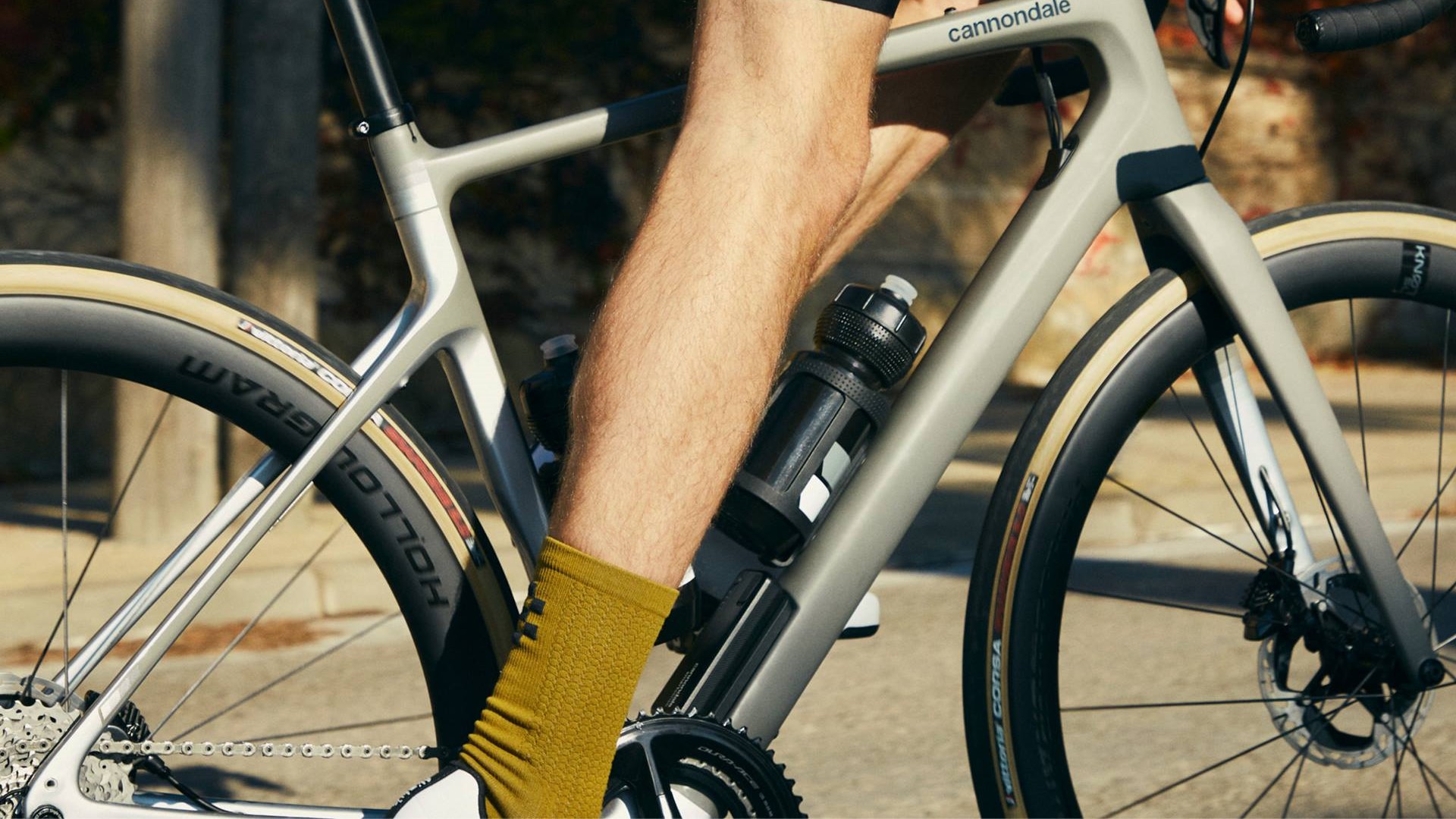
Synapse Carbon
Specifications
Reasons to buy
Reasons to avoid
The Synapse Carbon is Cannondale’s performance endurance road offering. Using some aero features alongside additional compliance and wide tyre clearances, it’s designed to be a bike that can be ridden all day as well as tackle more adventurous road, or off-road, surfaces. The geometry is also higher and shorter than more race day offerings. In short, it's one of the best endurance road bikes
The range offering is quite broad, with prices starting from £2400 for the Shimano Tiagra equipped model, up to £9000 for the Dura Ace Di2 version with Cannondale’s SmartSense radar and light technology.
It is unfortunately slightly limited by the size range, with 51-58 covering most people but missing out a good portion with no 47cm or 61cm options. Additionally, as a starting point, the bikes should come with wider than 30c tyres for better all-road performance.
Model range
- Synapse Carbon 1 RLE (Shimano Dura Ace Di2)
- Synapse Carbon 2 RLE (Shimano Ultegra Di2)
- Synapse Carbon 3 L (Shimano 105 2x11)
- Synapse Carbon 4 (Shimano Tiagra 2x10)
Cannondale Time Trial bike
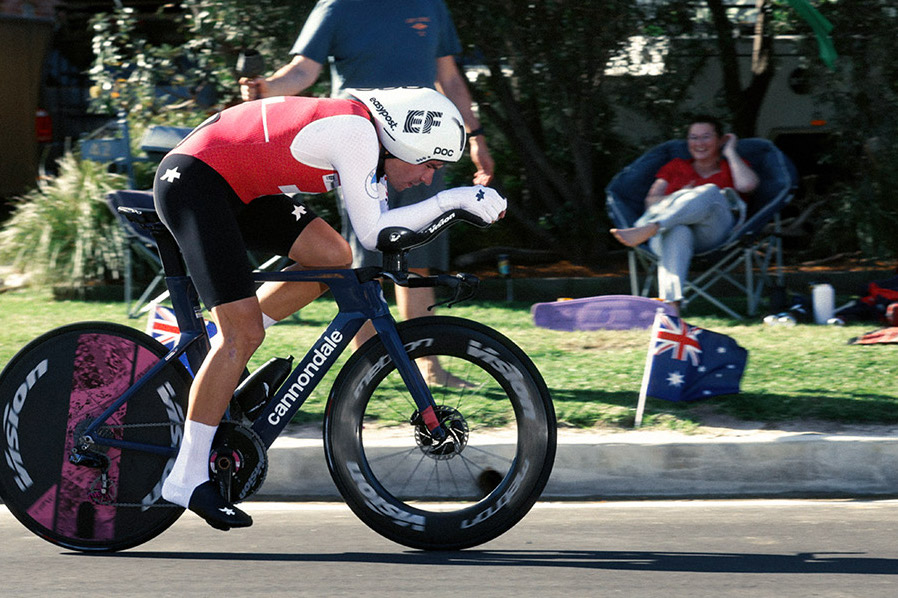
SuperSlice TT
Specifications
Reasons to buy
Reasons to avoid
It's difficult to find information on the SuperSlice time trial bike. It's hard to find on the Cannondale website and my even be an athlete-only model.
Looking at the frame, it appears to be a development on the Systemsix aero road frame, but with a sloping top tube, narrower headtube, and wider forks. No additional info is provided by Cannondale, yet the bike exists and by UCI rules should be available for purchase.
The SuperSlice may be a special order-only model from the Cannondale network.
Cannondale Gravel bikes
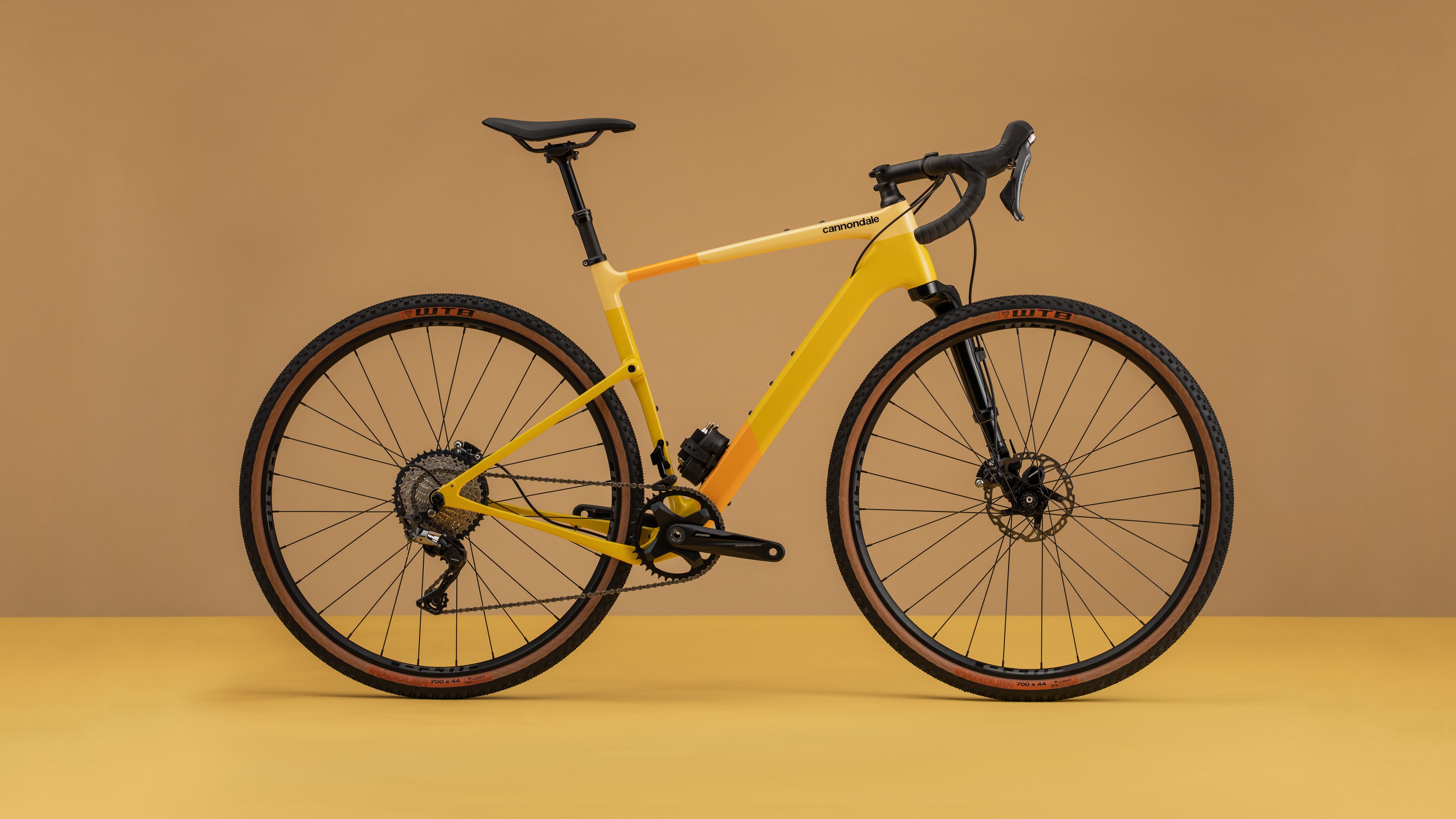
Specifications
Reasons to buy
Reasons to avoid
The Cannondale Topstone Carbon is the brand’s do-it-all gravel bike and is one of the best gravel bikes out there. The use of Kingpin suspension technology gives 30mm of travel or movement at the seat and 10mm travel at the rear wheel, making for a more plush ride with a very easy-to-use and low-maintenance system.
There is also the option for the Lefty suspension fork for more rugged terrain, plus huge tyre clearances when paired with 650b wheelsets. Various mounting points also make the bike suitable for adventure riding where masses of cargo are required. The Topstone Carbon range can also be equipped with Cannondale's SmartSense lights and radar system.
It’s not the lightest of frames thanks to all these extras. There is however a Lab71 version which shaves off some weight but adds a huge amount to the price. UK full-bike options get Vittoria Terrano Dry 38mm tyres as standard, but 40-42mm rubber would be preferred as standard.
Cannondale Topstone Carbon Lefty 3 in-depth review
Model range
- Topstone Carbon 1 RLE (SRAM Force AXS XPLR)
- Topstone Carbon Rival AXS (SRAM Rival AXS)
- Topstone Carbon 2 L (Shimano GRX 800)
- Topstone Carbon 2 Lefty (Shimano GRX 800)
- Topstone Carbon Apex AXS (SRAM Apex AXS)
- Topstone Carbon 3 (Shimano GRX 800/600)
- Topstone Carbon 3 650b (Shimano GRX 800/600)
- Topstone Carbon 4 (Shimano GRX 400)
- Topstone Carbon Lab71 Frameset
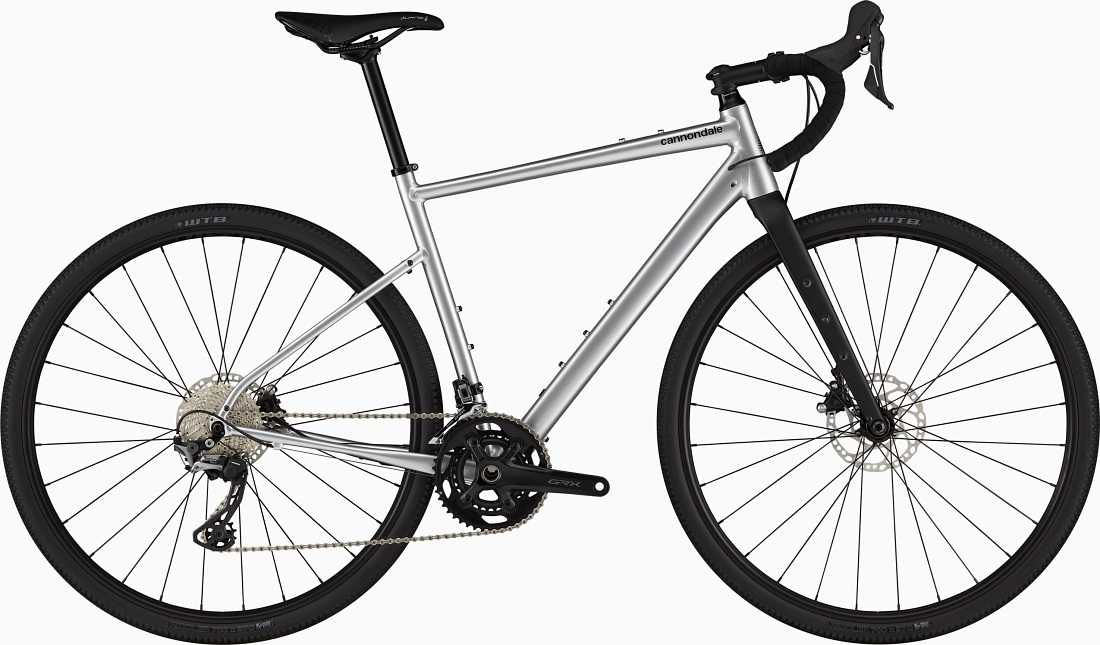
Topstone Alloy
Specifications
Reasons to buy
Reasons to avoid
The Topstone Alloy takes many of the features from the Topstone Carbon and implements them into a cheaper overall package. There are just as many mounting points for multi-day adventure rides or for fitting mudguards for winter road rides.
The big difference however is the lack of the Cannondale Kingpin suspension system which does result in the frame being a little harsher on rough surfaces even with a carbon fork.
Compared to the Topstone Carbon range, the alloy version offers pretty good value. We think there are some better value options available from other brands though.
Model range
- Topstone Alloy 1 Apex (SRAM Apex XPLR)
- Topstone Alloy 1 (Shimano GRX 800/600)
- Topstone Alloy 2 (Shimano GRX 400)
- Topstone Alloy 3 (Shimano Sora 2x11)
- Topstone Alloy 4 (microSHIFT Advent X)

SuperSix EVO SE
Specifications
Reasons to buy
Reasons to avoid
Cannondale’s gravel race bike, the SuperSix EVO SE builds on the previous generation SuperSix EVO road frame with aero tube profiles, a longer race focussed geometry, and a tyre clearance of 45mm.
There are no additional suspension or compliance features, with the sole focus being on power transfer and aggressive off-road riding. Being a reasonably lightweight gravel offering also makes it a solid all-season fast bike. You could easily ride it on the road with a change of wheels or tyres.
However, the limited mounting options make it less ideal for storage, hydration or mudguards. A starting price of £4200 is also high for a mechanical groupset bike with cheaper wheels. This is a a fairly specific machine that has been designed with a single use in mind.
Model range
- Supersix EVO SE (SRAM Rival AXS)
- Supersix EVO SE 2 (SRAM Apex 2x11)
Cannondale CX bikes

SuperSix EVO CX
Specifications
Reasons to buy
Reasons to avoid
Identical to the SuperSix EVO SE, the EVO CX just changes the frame colour and adds a more cyclocross-specific groupset in the form of the SRAM Force 1x. That frameset does allow for 13mm clearance on either side of 33mm tyres to account for the buildup of mud often seen in cyclocross racing. Plus the lightweight and stiff frame allows for a nimble and reactive ride perfect for CX races.
However, the price is high, with only the £4000 base option available, and no frame-only choices.
Model range
- Supersix EVO CX (SRAM Force 1x11)
Cannondale E bikes
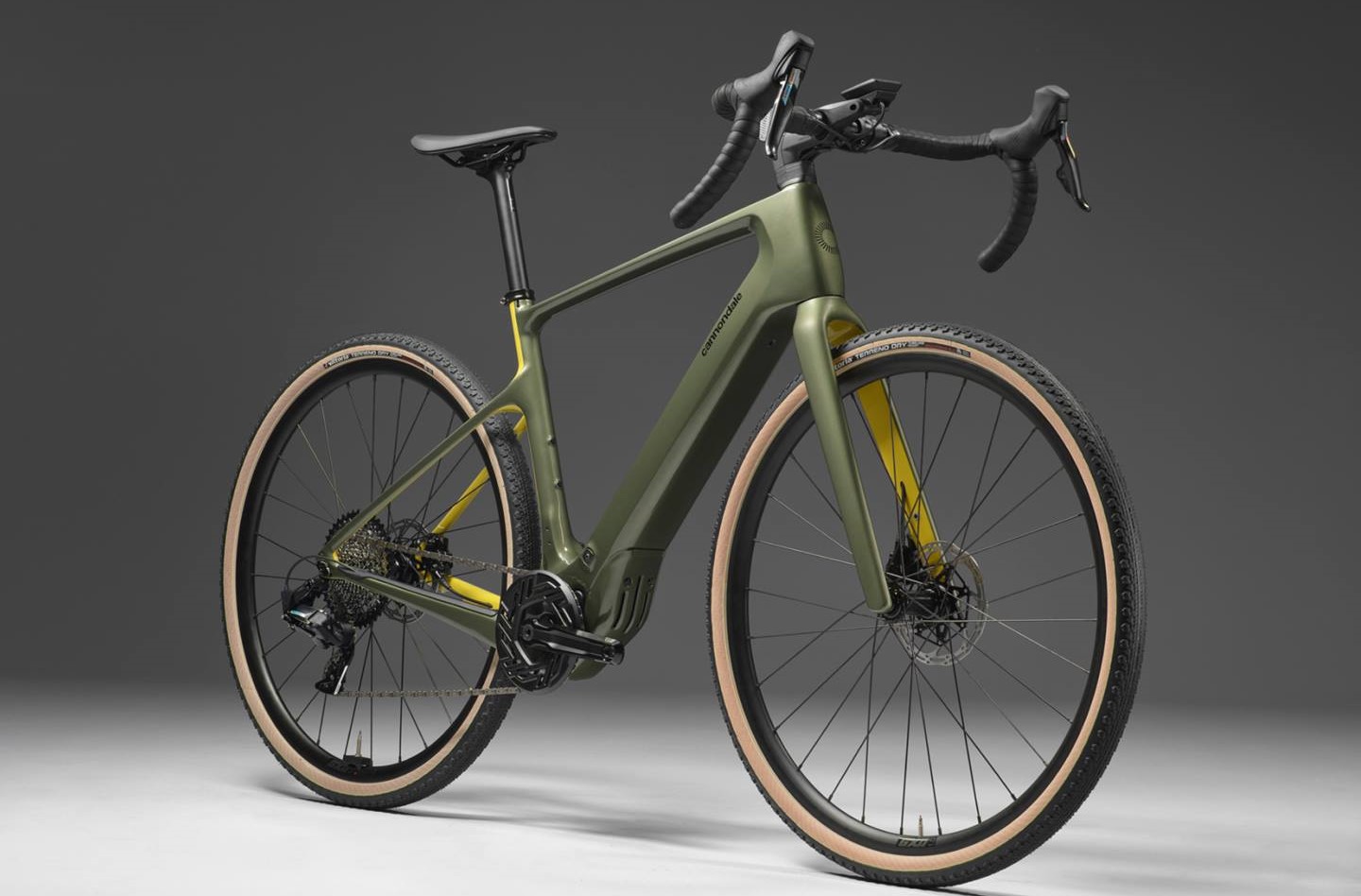
Synapse Neo Allroad
Specifications
Reasons to buy
Reasons to avoid
This is the brand’s carbon fibre e-road bike offering, and the top end one to boot. Building on the Synapse frame with wide tyre clearances at 45mm, along with many mounting points for both storage and fenders. It’s a great road or all-road option.
The Bosch Compact Powertube motor and display make for a powerful 400Wh battery with easy to use system. For extra range, an extender can be fitted.
With all of these elements combined it does come out as quite a heavy carbon e-bike. Additionally just the one option might be limiting on paint schemes and groupsets. However as a standalone e-bike it represents decent value, just with limited choice.
Model range
- Synapse Neo Allroad 1 (SRAM Force AXS XPLR)
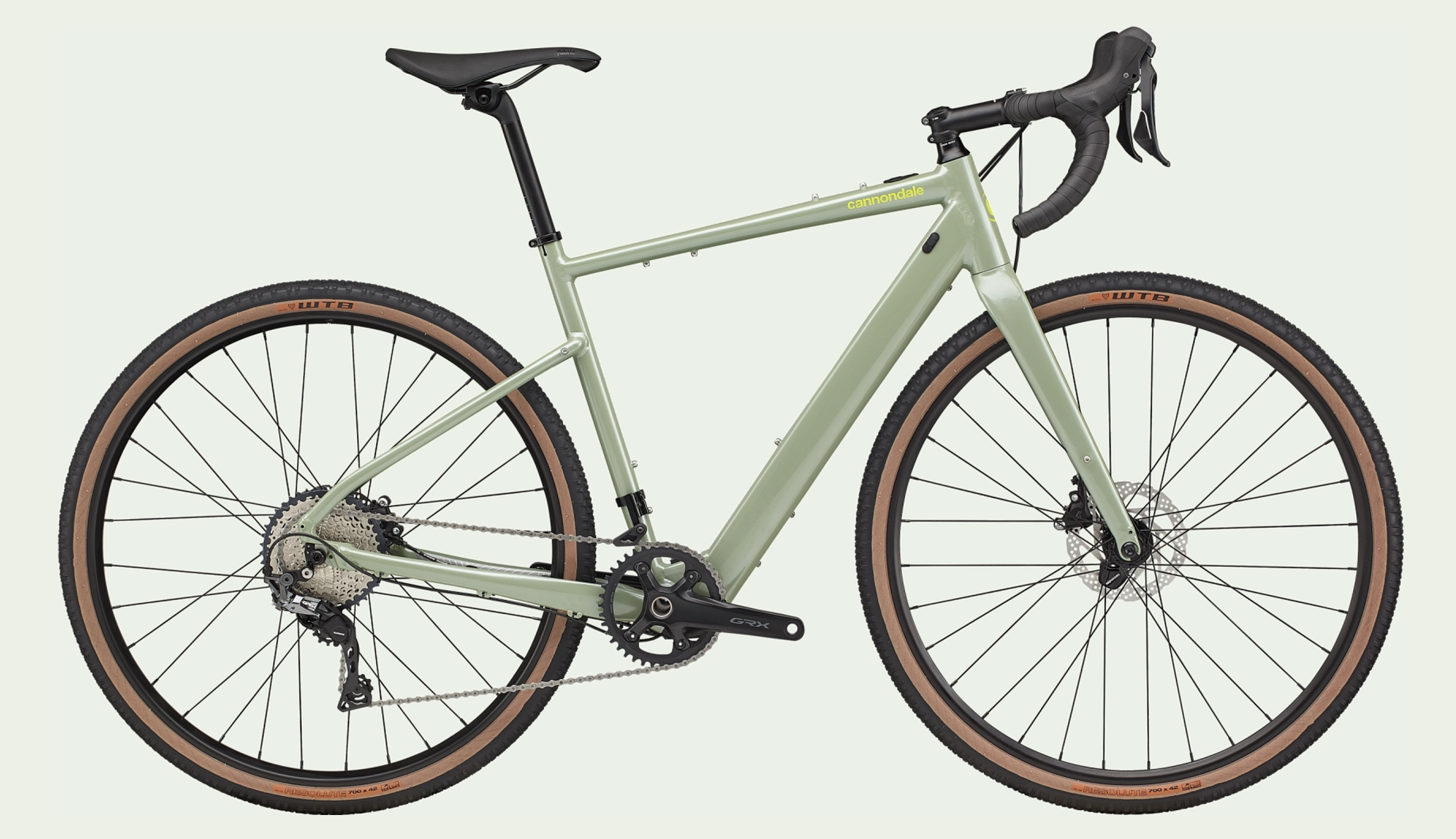
Synapse Topstone Neo
Specifications
Reasons to buy
Reasons to avoid
This is the alloy e-road bike option in Cannondale’s lineup, the Topstone Neo uses the hub-mounted Mahle ebikemotion X35 250Wh motor rather than the Bosch 400Wh found on the Synapse Neo. It’s an easy-to-use system and cheaper than the Bosch, however, it does limit the option for changing wheels.
The Mahle system is very realistic feeling, so if you are interested in an e-bike that feels like a regular bike, this could be the model for you.
The bike is a little on the pricier side when compared to other alloy e-bikes from the likes of Ribble. However, the wide array of mounting points, wide tyre clearance, and Shimano GRX drivetrain make for a solidly performing bike.
Model range
- Topstone Neo SL 1 (Shimano GRX 800/600)
- Topstone Neo SL 2 (Shimano GRX 400/600)
Cannondale explained
Cannondale road bike and gravel bike range explained
Cannondale manufactures a huge range of different bikes to suit many different rider needs and budgets.
There are no women’s specific offerings from the brand, instead, it offers a broad range of sizes across much of its range to accommodate riders of all different shapes and sizes. In both the men's and women’s World Tour teams, the same SuperSix EVO models are used, but with different sizes and components. The outlier is the CAAD13 which does have one women’s specific model.
Several of Cannondale’s bikes come in different tier options. The lower the number, the higher up in the range the bike is. There are additional monikers such as Hi-MOD and the range-topping Lab71. These variants use lighter carbon fibre layups to reduce frame weight but at a substantial cost. The lower specification frames will be a little heavier, and alloy options are also available for lower price points. As with many bike brands, the higher the price, the more diminishing the gains and returns are. But for those who want the best of the best, it is available.
Who are Cannondale?
Cannondale is an established road bike brand bike brand. Founded in 1971 in Connecticut by Joe Montgomery, Murdock MacGregor, and Ron Davis, the brand has always developed unique and interesting technology.
It was one of the first brands to implement aluminium and carbon fibre into its frames while steel was still the number one frame material. On the off-road side, although now found in their gravel bikes, they introduced the single-sided 'lefty' suspension fork to provide suspension with a far reduced weight. Today they still push new ideas with the 'KingPin' suspension joint and the super light, one-piece HollowGram SpideRing chainrings.
The brand now also makes wheels, as well as finishing kits, helmets, tools and accessories.
Cannondale bikes can be found across a broad range of stores across the UK and globally, from local bike shops to online retailers. This makes them highly accessible, models can be test-ridden before buying while direct-to-consumer brands have limitations in that field.
The latest race content, interviews, features, reviews and expert buying guides, direct to your inbox!

Freelance cycling journalist Andy Turner is a fully qualified sports scientist, cycling coach at ATP Performance, and aerodynamics consultant at Venturi Dynamics. He also spent 3 years racing as a UCI Continental professional and held a British Cycling Elite Race Licence for 7 years. He now enjoys writing fitness and tech related articles, and putting cycling products through their paces for reviews. Predominantly road focussed, he is slowly venturing into the world of gravel too, as many ‘retired’ UCI riders do.
When it comes to cycling equipment, he looks for functionality, a little bit of bling, and ideally aero gains. Style and tradition are secondary, performance is key.
He has raced the Tour of Britain and Volta a Portugal, but nowadays spends his time on the other side of races in the convoy as a DS, coaching riders to race wins themselves, and limiting his riding to Strava hunting, big adventures, and café rides.
